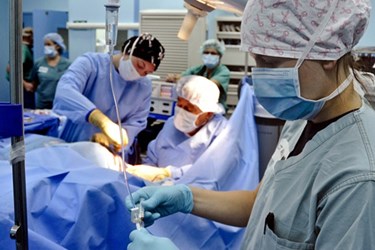Antimicrobial Coatings And Healthcare Devices: An Emerging Innovation
By Megan Williams, contributing writer

As technology plays a greater part in healthcare, more attention is being paid to how it interacts with the healthcare environment. Most specifically, how device surfaces and materials behave in terms of harboring micro-organisms. Until recently, occasional wipe-downs with external treatments were the standard method of sanitizing devices, but innovative companies have begun incorporating anti-microbial properties into device cases.
Beyond Keeping Clean
The desire to keep devices as microbe-free as possible impacts hospitals and facilities at levels beyond just safety. Medicare and Medicaid, for years, have denied reimbursement for treating patients who’ve acquired preventable infections. In other words, devices that spread pathogens impact a facility’s bottom line. The CDC reports that hospital acquired infections account for 99,000 deaths and $45 billion in added healthcare costs each year.
This means that devices that are proven to ward off disease transmission represent a smart investment for any cost-conscious hospital or facility, and an opportunity for innovation for medical device manufacturers — and the VARs who provide them.
Devices And The Infection Chain
When talking about acute care facilities in particular, three-quarters of infections fall under one of these four categories:
- Surgical site infections
- Central line-associated bloodstream infections
- Ventilator-associated pneumonia
- Catheter-associated urinary tract infections
According to the Multidisciplinary Alliance Against Device-Related Infections (MADRI), at least one-half of all hospital acquired infection cases are medical device associated. That may sound counter-intuitive, but the surfaces of medical devices are even more conducive to creating layers of microbes than human skin (which has an inherent immune system).
What Are The Solutions?
The process of developing truly effective anti-microbial devices is a complex one that goes well beyond simply using new materials to construct products. Further contributing to the rise of antibiotic resistant bacteria strains is an enormous concern. According to Marcia Ryder, PhD, MS, RN, of Ryder Science, a medical biofilm research facility in San Marcos, CA, “Antibiotics are developed and tested against microorganisms living in a planktonic or free-floating growth phase. When bacteria attach to surfaces, they begin to communicate, cooperate, and build a structured community … They become profoundly changed and different from that bacteria floating around in a broth so the antibiotics that we order to kill them have limited effect.”
Beyond that, it is necessary to find not only personnel with backgrounds in both chemistry and microbiology, but also to comply with FDA standards in both development and testing processes.
One of the most popular solutions has been silver ion technology, but even that has its pitfalls, with some bacteria adapting to the use of nanosilver.
As the field of medical devices broadens and technology continues to grow in health settings, there is no doubt that solution providers will find opportunities for both themselves and their clients in bringing them the safest healthcare experiences possible.
